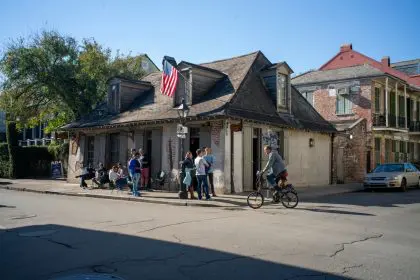 In the U.S., it is estimated that 40 percent of edible food is thrown away by households and retailers annually and that food waste equals about 12 percent of the total waste produced in the nation. In total, industrial nations waste about 222 million tons of edible food each year, barely less than the 230 million tons of food produced in sub-Sahara Africa yearly.
In the U.S., it is estimated that 40 percent of edible food is thrown away by households and retailers annually and that food waste equals about 12 percent of the total waste produced in the nation. In total, industrial nations waste about 222 million tons of edible food each year, barely less than the 230 million tons of food produced in sub-Sahara Africa yearly.
One of the difficult tasks that many African Americans confront in America’s new economic reality, besides unemployment, is survival at its least common denominator — putting food on the table. A person working full time at minimum wage earns $14,500 a year. The official poverty line for a family of three is $17,285. Nationally, more than 30 percent of children live in low-income working families. A large number of these families are African American. One in five children in the United States lives below the poverty line.
With the recent natural disasters occurring around the globe, it may be time to consider what impact this may have on the daily living of many across the nation. Droughts in China and Europe and earthquakes as well as floods all have a major impact on what we do here in America, especially with respect to our food supply. There is already a global food shortage, and the economic crisis makes it harder for many African Americans on the lower end of the economic spectrum just to put food on the table.
The fact is that in America, hunger and race are related. In 1991 46 percent of black children were chronically hungry compared to 16 percent of white children. Moreover, the infant mortality rate is closely linked to inadequate nutrition among pregnant women. The U.S. ranks 23rd among industrial nations in infant mortality with black infants dying at nearly twice the rate of white infants.
No matter what anyone says, the fact is that the possiblity of hunger and starvation in America is increasing and African Americans, mainly living in urban areas with little or no knowledge of farming, will be at the greatest risk. Food prices are rising, supplies are very tight and already we have seen some very intense food protests flare up around the globe this year.
The threat of starvation and extreme hunger in America is real. Low-income households already spend a greater share of their income on food per data from the Bureau of Labor Statistics, Consumer Expenditure Survey, 2006. Around the globe, Every 3.6 seconds someone dies of hunger and it is estimated that some 800 million people in the world suffer from hunger and malnutrition. I just wonder what the figures are among African Americans in this current economic climate. –torrance stephens, ph.d.















